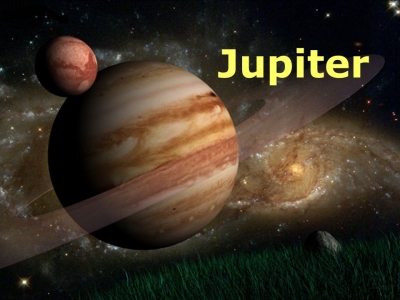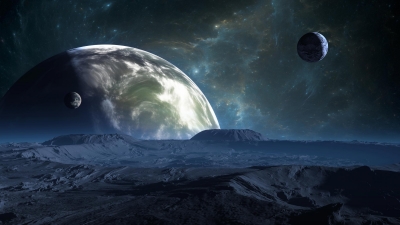Which is the largest planet?

The largest planet in our solar system, Jupiter, is located fifth from the Sun. It is more than two times the size of all the planets in our solar system combined. Jupiter has also been instrumental in our understanding of the universe and our place in it. In 1610, Galileo discovered Jupiter's four large moons: lo, Europa, Ganymede and Callisto. This confirmed the Copernican view that the Earth was not the centre of the universe as these newly discovered celestial objects were revolving around another planet.
It is estimated that eleven Earths could fit across Jupiter's equator. To put it in other words, if our planet is the size of a grape, then Jupiter is the size of a basket-ball. It has an iconic Great Red Spot, which is a giant storm that has been active in Jupiter's atmosphere for hundreds of years. This storm is bigger than the Earth!
Jupiter's orbit is about 778 million kilometres or 5.2 Astronomical Units (AU) from the Sun (Earth is one AU from the Sun). Jupiter is a gas giant, which lacks an Earth-like atmosphere. Even if it has a solid inner core at all, it would only be about the size of the Earth. Jupiter's atmosphere contains mainly hydrogen (H) and helium (He) and has more than 75 moons. It rotates about its axis once every 10 hours (a Jovian day), and takes about 12 Earth years to complete one revolution about its orbit around the Sun (a Jovian year).
In the year 1979, NASA's Voyager mission discovered Jupiter's faint ring system. We have discovered that all the four giant planets of our solar system have ring systems. Till date, nine spacecraft have visited Jupiter. Of them, only the most recent one landed on Jupiter. Seven of them only flew by this gas giant and the other two just orbited it. Juno, the latest spacecraft, arrived on Jupiter in 2016.
Although it is the biggest planet in our solar system, Jupiter cannot support life as we know it. But we have come to know that some of its moons have oceans beneath their crusts, which could possibly support some form of life.
Picture Credit : Google

